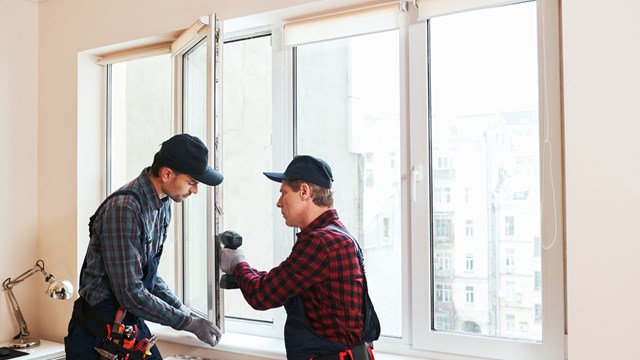When the weather is warm and the days are long, nothing says Summer like the sounds of neighborhood kids at play. There's safety to consider along with all the fun, however.
While all fifty states have statutes on the books spelling out the particulars of safe playground equipment construction and maintenance, the national Playground Code is the governing document that contains the universal guidelines by which any playground facility—public or private—must abide by.
There's one catch, however: code only presents guidelines and strong recommendations for safety—its checkpoints are not technically mandatory, though failure to comply could result in injury, lawsuits or worse. A playground or some good pieces of equipment is a terrific amenity, both for kids and their parents. Making sure that equipment is properly constructed and installed and learning to play safely and abide by the guidelines is essential for any co-op or condo board.
Decoding the Playground Code
According to Bill Boyce, president of Boyce Associates, a play equipment manufacturer in Trexlertown, Pennsylvania, "There are two documents governing the playground industry. The first is the Consumer Product Safety Commission (CPSC) Guidelines, which was set up in 1981 as a cooperative venture between the National Recreation and Parks Association and the CPSC. Its purpose was to try to establish guidelines for playground safety." Boyce says that collaboration was in response to numerous accidents on public play equipment.
The CPSC guidelines were updated again in 1990, Boyce continues, and subsequent to that the American Society for Testing and Materials (ASTM), a sanctioning organization, created an industry standard—called 14-87—at the end of the following year. "That is an industry standard that all manufacturers must be in compliance with." Boyce says.
The Playground Code, also known as Public Law 1999 Chapter 50, gave government, private and nonprofit entities until October 18, 2004 to be compliant for safety surfacing under and around playground equipment.
"That also includes having the proper zoning for use of that equipment," says George Herberger, a certified playground safety inspector and vice president in charge of sales for Ben Shaffer & Associates, a manufacturer's representative in Lake Hopatcong. "And it's still giving you until 2007 to bring your playgrounds into compliance with the Consumer Product Safety Commission guidelines. Any work that's done on a playground now has to either bring it into compliance or, if you're doing a renovation, a modification or putting in a new one, they must be compliant right away."
Herberger says the CPSC guidelines originally came out in 1991, but emphasizes again that they were not necessarily binding. "It was just a set of recommendations at that point," he explains. "It was not a law until this Public Law 1999 Chapter 50. New Jersey adopted it as a public law in 1999 and incorporated it into the Uniform Construction Act."
Scott Wolfson is a spokesperson for the U.S. Consumer Products Safety Commission based in Bethesda, Maryland, and says that although the CPSC offers a handbook that sets forth guidelines for the public in the construction and safe upkeep of playgrounds, they're not national regulations. "They're not mandatory," he says. "The handbook was developed in the 1980s and has gone through several revisions, including one in 2003. It is considered the Bible of playground safety."
Just outside of the Washington, D.C. area is a group that certifies playground inspectors nationwide, says Wolfson, and the CPSC's playground handbook is the key document that they use in their inspections. "When it comes to standards, there are quite a few voluntary standards that are developed and overseen by the ASTM," Wolfson adds. "With many of the voluntary standards, compliance in the industry is very high."
Keeping Up With the Code
Herberger says when the guidelines were released they totally changed the industry. "The manufacturers have all gone along with them," he says. "There have also been many revisions to products, and the installers now have to be very concerned that they have the proper safety zone for the equipment."
The guideline specifies certain use zones or safety zones around different types of equipment, Herberger explains, and an installer has to be concerned that he's working in accordance with those requirements. "As designers, we have to know all of those codes and design accordingly," he adds. "Now the ASTM has their own guideline for playground equipment, and we use both to design our equipment."
From the CPSC's point of view, Wolfson says, "The key is that many states have accepted and instituted many of CPSC's guidelines as official local codes. For the voluntary standards, our expectation is that manufacturers will implement that standard in how they make their playground equipment."
In terms of the guidelines, he continues, CPSC's hope is that the industry institutes many of those recommendations in their manufacturing and that co-op and condo communities purchase equipment and services from companies that meet CPSC's guidelines.
When it comes to individual states adopting those guidelines or signing them into law, Boyce says "There's a huge variation with how states look at guidelines. Generally until there's a government mandate people may not be pushed to follow guidelines—except through the litigation process."
Most towns or cities, he explains, understand the required due diligence. "If you get into a HOA or co-op, people say, 'They're only guidelines, and not standards or laws,'" Boyce says. If it can be proven that the owners were aware of the guidelines or standards, it can be noted that they did not give them due diligence—and that spells major liability issues. It's rare that this would happen with approved, pre-fabricated equipment, says Boyce, who feels that "if you work with a nationally recognized manufacturer today, you will get a structure that meets the current guidelines."
Making a Safer Play Zone
In this litigious age and in an environment that can easily prove dangerous—even fatal—to a child, an HOA board cannot simply visit a highway store, buy a piece of equipment with swings attached, place it in the ground and proclaim it to be both compliant and safe. "[Boards] definitely have to make sure that whatever they buy it meets all the guidelines for a public playground," Herberger says. "To reduce their liability, they need to make sure that it meets the guidelines, and an easy way to do that is to look for an IPEMA certification, which is a third-party testing organization that certifies that equipment meets the CPSC and the ASTN guidelines."
Wolfson cites two major areas—safe surfacing and spacing and gaps—as the most crucial potential safety risks. "Safe surfacing is an expense we really hope all these co-op and condo communities are undertaking," he says. "There is tremendous value to adding nine to 12 inches of shock-absorbing material, such as mulch, wood chips, or any other kind of rubberized surface under equipment." He says equal depth in all areas of the playground is something CPSC wants to see—that especially pertains to such areas as underneath swings, slides, and the climbing tiers.
"The biggest issue is maintaining the proper resilient surfacing under play equipment—the greatest number of injuries happen because of falls from the equipment to the ground," Boyce adds. "The best thing people can do is to make sure they have an impact-attenuating surface underneath their play equipment."
Spacing and gaps pose another potential hazard. As an example, Wolfson says the gap between ladders that climb from one level to the next should be greater than nine inches. "That allows a child's whole body to slide through if they slip," he explains, and prevents them from getting hung up or wedged between surfaces.
"When you get up to a second tier and you have protective barriers or guardrails, the gaps between bars or planks should be smaller than three and a half inches to prevent [a child's] head from fitting through the gaps."
Parents and playground supervisors should also be wary of such strangulation hazards as clothing with drawstrings, which can catch on slides. "The HOA should be aware of the setup and the daily use of the playground," Wolfson says. "The message should also be driven home to everyone that parental supervision is everything."
Consulting A Pro
When it comes to ensuring that your play area meets safety standards, Wolfson recommends leaving that to a professional. "Have the inspector come in with CPSC's handbook in hand and measure the depth of ground coverage, check to see if bolts are recessed into the wood, and go over the various measurements we have for swings and other components. They should also make sure the different areas of the playground are in fact appropriate for the different age groups they're intended for."
The industry is at a point where buildings and associations cannot just have their on-site maintenance person order a piece of equipment and install it without any kind of guidance or oversight. Today, Herberger says, they need a certified playground safety inspector, or at the very least, get a copy of the CPSC guidelines online and make sure the equipment is in compliance.
However, before even buying new equipment, it's important to evaluate the existing area. "Just because they have until 2007 doesn't mean that if an injury takes place and a lawsuit occurs they'll be off the hook," warns Herberger. "First boards need to inspect their existing equipment. Then, if they go forward and purchase something, they need to make sure it's IPEMA certified. After that, a regular program of maintenance is important." That means that every morning, before children are even allowed onto the playground, someone should check to ensure that the safety surfacing is in place, no concrete footings have been exposed, everything is tight on the structure, and that nothing has been broken or vandalized overnight.
The Safety Police
Although no official laws have been put on the books yet for failure to adopt the code's guidelines and there has not yet been a playground police force formed, Herberger says insurance companies are taking the lead with enforcement measures because they don't want to insure an area of high liability. "It's up to the person in charge of maintaining the grounds to be aware of any specific guidelines that pertain to their equipment," Herberger adds. "Your operations department should be aware of this and act on it."
Although HOAs are ultimately responsible for ensuring the maintenance of standards, Herberger adds, "You can also hire outside professionals who will come and do maintenance inspections for you. They normally don't do full-blown audits, but that's the best way of evaluating an existing area." Aside from audits, the property manager is also a good resource for ensuring consistency.
If maintenance and inspection is going to be left to the building staff, Boyce says, it's a shared responsibility. "There are people who do it right and there are the people who put the stuff in and then walk away," he says. "The property manager should be aware of the requirements for maintenance—if you thoroughly inspect all of your equipment on a regular basis, maintenance is really a small issue."
So before your building decides to liven up its property with a large, colorful play area for young children, make sure your association is ready and able to play it safe.
Michael McDonough is a freelance writer living on Long Island.







Leave a Comment